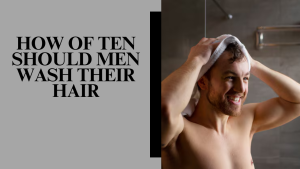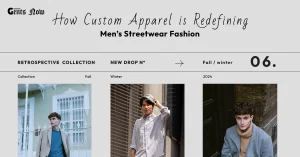Hairstyles are not just about appearance—they’re a reflection of personality, identity, and self-expression. Over time, certain hairstyles have come to symbolize boldness, individuality, and a break from convention. From the classic pompadour to the rebellious Mohawk, iconic hairstyles have shaped the culture of grooming and fashion for decades. In this blog, we’ll dive into the world of iconic hairstyles, what makes them stand out, and how they continue to challenge the norms of men’s grooming. Whether you’re looking to embrace a timeless classic or try a daring new look, iconic hairstyles offer endless possibilities to define your personal style.
The Evolution of Iconic Hairstyles
Iconic hairstyles evolve through cultural and fashion shifts, reflecting the personalities and movements of each era.
The 1950s: The Pompadour

Made famous by Elvis Presley, the pompadour added height and volume, symbolizing youthful rebellion and masculinity, and marking a turning point in men’s grooming.
The 1960s: The Mop Top

Popularized by The Beatles, the mop top featured a casual, tousled look. It reflected creativity and the spirit of change.
The 1970s: The Afro and Long Hair

The Afro represented pride and identity, while long hair symbolized freedom and counterculture, especially during the civil rights and peace movements.
The 1980s: The Mullet and Big Hair

The mullet balanced “business in the front, party in the back.” Big, voluminous hairstyles reflected boldness and extravagance.
The 1990s: Grunge and Spiked Hair

Spiky, messy hairstyles from the grunge movement reflected the anti-establishment attitude of the 1990s, moving away from the more polished styles of the 1980s. These looks, as seen in haircuts from that ’90s show, continue to inspire many who want to tap into that rebellious era.
The 2000s and Beyond: The Modern Reinvention

Classic styles like the pompadour and undercut have been modernized, allowing for greater versatility and customizations, making them accessible to all men.
The Importance of Hairstyles: More Than Just Hair
Hairstyles go beyond grooming—they reflect personality, identity, and social attitudes. Iconic hairstyles embody confidence and help break societal norms.
A Statement of Identity
Your hairstyle is a visual representation of who you are. The pompadour exudes confidence, while the buzz cut emphasizes masculinity and practicality, shaping both how others perceive you and how you perceive yourself.
Breaking Societal Norms
Many iconic hairstyles have deep cultural roots. The Afro symbolized empowerment during the Civil Rights Movement, while the Mohawk, associated with punk culture, represents rebellion against mainstream ideals.
Confidence and Self-Expression
An iconic hairstyle can boost self-esteem. Whether it’s a bold Mohawk or a slick pompadour, these styles are powerful tools for individuality and making a statement.
What Makes a Hairstyle Iconic?
Iconic hairstyles are characterized by several defining traits. They don’t just follow trends—they define them. Here’s what makes a hairstyle iconic:
Timeless Appeal
Iconic hairstyles are not fads. They possess a timeless quality that allows them to stay relevant across different generations. For example, the pompadour has been a popular choice for decades, and the Afro continues to be a powerful symbol of cultural pride.
Cultural and Historical Significance
Iconic hairstyles are often tied to cultural or historical movements. Whether it’s the rebellious Mohawk, the civil rights-era Afro, or the punk rock spiked hair, these hairstyles have represented more than just fashion; they’ve been powerful tools of social expression and political activism.
Adaptability
An iconic hairstyle can be adapted and personalized to suit different hair types, face shapes, and personalities. It doesn’t matter if your hair is thick, fine, straight, or curly—there’s an iconic hairstyle out there for everyone. This flexibility is what allows these styles to transcend generations and remain relevant.

Top Iconic Hairstyles Defying Convention
Here are some of the most iconic hairstyles that have defied convention and stood the test of time:
The Pompadour
- Why It’s Iconic: This style is a classic. Known for its height and volume, the pompadour became popular thanks to figures like Elvis Presley. It symbolizes confidence and boldness.
- Styling Tips: Use a strong-hold pomade and blow-dry your hair for volume. Comb the hair back for that timeless look.
- Best For: Men with oval, square, or diamond-shaped faces.
The Undercut
- Why It’s Iconic: The undercut is all about contrast. It involves shaving the sides and keeping the top longer, allowing for a clean and edgy look that can be styled in numerous ways.
- Styling Tips: Keep the sides cleanly shaved while leaving the top longer. You can choose a slicked-back style or a messy, textured look.
- Best For: Those with angular face shapes.
The Buzz Cut
- Why It’s Iconic: The buzz cut is simple yet striking. Its no-nonsense nature symbolizes masculinity and practicality. This low-maintenance style remains a classic for men who prefer a minimalist approach to grooming.
- Styling Tips: Buzz cuts require little to no styling but do need regular trims to keep them looking sharp.
- Best For: Men with strong jawlines and defined facial features.
The Mohawk
- Why It’s Iconic: The Mohawk is synonymous with punk rock and rebellion. It involves shaving the sides while leaving a strip of hair down the center, creating a bold, edgy look.
- Styling Tips: To style a Mohawk, use a strong-hold gel or wax and comb the center of the hair upward.
- Best For: Those who want to make a bold, rebellious statement.
The Afro
- Why It’s Iconic: The Afro symbolizes freedom, pride, and cultural identity. Popularized in the 1970s, the Afro continues to be a powerful statement of individuality. For those with curly hair, styling options are abundant—check out some of the best curly hairstyles for men to embrace your natural texture.
- Styling Tips: Regular trims and proper moisturizing will keep your Afro looking its best. Use curl creams or oils to maintain its shape and texture.
- Best For: Men with curly or textured hair.
The Faux Hawk
- Why It’s Iconic: The faux hawk gives you the edge of a Mohawk without the full commitment. It’s a more versatile and wearable version of the Mohawk, offering a stylish yet manageable look.
- Styling Tips: Apply a medium-hold gel to damp hair, then use your fingers or a comb to lift the center section.
- Best For: Those with medium to thick hair.
How to Maintain Your Iconic Hairstyle
Maintaining an iconic hairstyle requires regular care and attention. Here’s how to keep your hair looking sharp:
Regular Trims
Even the most iconic styles need maintenance. Regular trims are necessary to ensure your hairstyle stays fresh and well-shaped.
Use the Right Products
Choose products that suit your hair type. Pomades, gels, and waxes are great for holding styles in place, while moisturizers and conditioners keep your hair healthy.
Healthy Hair Care
Good hair health is essential. Incorporating effective hair loss prevention strategies can help maintain the strength and fullness of your hair for the long term.
Conclusion
Iconic hairstyles are much more than just trends—they represent individuality, creativity, and cultural movements. From the pompadour to the Mohawk, these timeless styles have proven that defying convention can create a lasting impact. By choosing an iconic hairstyle that reflects your personality and values, you can make a powerful statement every time you step out. Are you ready to embrace your own iconic hairstyle? Visit your barber today and take the plunge into one of these bold, classic looks!



